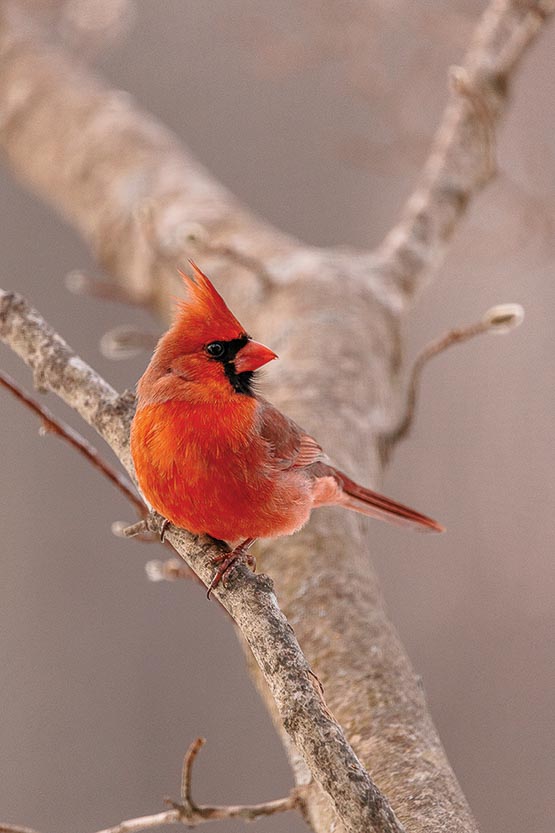By Mary Pols
Photos by Matt Trogner
From our April 2023 Animals issue
It seems most bird news is bad news these days. Reports around the world register bird populations that are dwindling in size and diversity, courtesy of climate change, prowling pet cats, land development, wind turbines, and various other, mostly human-driven factors. Recently, a pair of once-in-a-generation studies of Maine bird populations wrapped up years of field work. Now in their data-crunching phases, researchers are bracing for sad stories, but they’ve also seen signs of some species making turnarounds, and they’re hopeful their work can impact plans to protect birds in the future.
The more comprehensive of the two surveys, the Maine Bird Atlas, was organized by the Department of Inland Fisheries & Wildlife, with support from Maine Audubon and other conservation groups. It pulled in thousands of volunteers, who logged 5.5 million bird observations across the state over five years, turning up some surprises along the way. Northern cardinals, for example, are breeding as far north as Aroostook County, which they definitely weren’t doing in the late ’70s and early ’80s, when DIFW, Audubon, and others put together a forerunner, the Atlas of Breeding Birds in Maine. Merlins, meanwhile, have mounted a surprising comeback, but aerial insectivores like swallows and swifts, which rely on the availability of flying insects for their diet, are struggling.



The primary goal is to lay the groundwork for future study. “I consider us working for the next generation of Maine biologists,” says naturalist Glen Mittelhauser, the project coordinator for the Maine Bird Atlas, who previously led the cataloging of 857 plant species in Baxter State Park. “I want to make sure they have the tools to assess change. [This data] is unlike anything Maine has ever had. We aren’t just moving forward into the future kind of blindly, where it’s like, ‘Yeah, things are changing.’”
The prior atlas listed 201 breeding bird species in Maine. It was largely a volunteer effort as well, anchored by a few hundred birders who took notes in the field and sent their findings in the mail. The new atlas’s contributors filed their findings through eBird, the Cornell University ornithology lab’s online database for citizen scientists, and they identified at least two dozen more breeding species (and tallied additional species that overwinter in Maine and breed elsewhere). That higher number, at face value, is a good sign, although it’s also the consequence of some erstwhile southerly species moving in, and it’s not necessarily an indicator of how individual species are faring. Final results are still a ways off — the book, which isn’t expected out for several years, will include maps that show the density of various species, including those that might be in decline.
“We can turn that into conservation plans for the state of Maine,” says Evan Adams, a quantitative ecologist with the Portland-based Biodiversity Research Institute who has been deeply involved with the Maine Bird Atlas. Say, hypothetically, final data shows that the chestnut-sided warbler is in trouble. That species thrives in early successional forests, Adams says, and future state wildlife plans and forest-management decisions could help create pockets of that environment for them.
Adding to the glut of incoming data is the 30-Year Bird Project, a separate study more narrowly focused on the impact of commercial forestry on bird populations. It’s a follow-up to research conducted from 1992 to 1994 across a million acres in the Moosehead Lake region. John Hagan was one of the surveyors three decades ago, and he was motivated to replicate the project after a 2019 review in the journal Science found that North America’s total bird count was down by three billion — a nearly 30 percent drop — since 1970. He wondered if changes to forest management, like moves away from clear-cutting and increased harvesting of hardwoods, had made a local impact. His group continues to sift through their numbers, but at the very least, Hagan says, Maine’s forests are still filled with birdsong. “We are just incredibly lucky that half the state doesn’t have anybody living in it,” he says. “It makes for really good bird habitat.”




